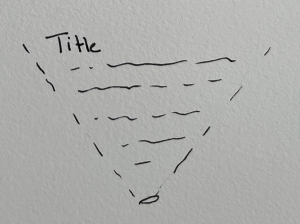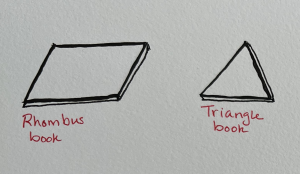Books are amazing devices with a multitude of functions. Some books teach new topics and lessons to those willing to learn, such as textbooks and other informative varieties. Others provide information on a topic such as a memoir or self-help book. Some books provide a means to escape from reality through various forms of fiction. Books can have genres such as fiction and non-fiction to categorize their content, and subgenres such as fantasy and mystery to further distinguish themselves. Books are made for all ages, from toddlers to adults. They can also be made for people with different abilities, such as braille books. Some books come as audiobooks, and some are only images. The variety and scope that books can cover is tremendous, and they continue to amaze well into the future.
The book has come a long way when it comes to how it started and where it is now. At one point it started off in inscriptions or carvings in clay or stone, recording information and great stories such as Gilgamesh (Borsuk 4-7). It was bamboo formed into flats that could be rolled together and written on (Borsuk 25-26). It became paper made of papyrus, animal hide, or a slurry of plant material (Borsuk 12-13, 18, 28). This paper became bound in several ways, such as the sutra-folded books that are familiar to the folded pamphlets we see today (Borsuk 36-37). Books were soon written on with text, drawings, and designs with illuminated manuscripts and embellished with luxuries (Borsuk 48-51). Soon it turned into something that anyone could grab to read whatever text was on those pages. It became easy to find, hold, and read a book (Borsuk 82, 102-105). As time has gone on, it continued to evolve into what it is today.

The book has changed in so many ways. Now it is an enhanced version of the e-books we once knew. Computers have advanced to become even more portable than laptops as we knew them. Most portable computers are more tablet like in nature. Computers that are stationary are thin and powerful. Holograms are integrated into daily life, projected on walls, ceilings, appliances, or in midair. As a result of the innovations in recent years, books are extremely portable and accessible. Similar to e-books, you can open them on any digital device and have the option of reading the text or having it read aloud to you. Every device has the functionality for digital books to be read and opened, freeing itself from required programs. It took time to get to this stage, but as computers of the past could open text files, they can now open and allow users to read books easily.
Digital books in our future times are primarily published online without the use of a publishing company, similar to the post-artifact book (Mod, “Post-Artifact Books & Publishing.”). Many authors choose this route, though academic books and major collections still tend to be published with a company. Some authors who generate a following for their series release their books in increments or chapters, similar to a TV show with a regular schedule. Other authors release the entirety of their book on shopping websites and specialty book websites. Some books are sold for a set price while others are funded by ads. Free digital books tend to have inserted ads, sometimes between chapters or at the start and end of the book. Publishing in this new age of technology has transitioned to the hands of the author and away from the publisher. Most aspects of support a publisher provides can be substituted by the author, similar to how Craig Mod described his model of the post-artifact book (“Post-Artifact Books & Publishing.”).

Because of technological advancements, readers have the book in its most accessible form yet. They can buy books off the internet or otherwise download them. Once downloaded, the book is available on their device for viewing. Readers can also transfer their books to other devices. As they open their book, it has several forms it can take chosen through a menu screen. Options such as form, font style and size, and background are available. One option is a digital model of the physical book to provide a more tactile experience; a hologram based device is usually required to view such a model. Another is the option to view the book as a flat text experience with no digital models. Once opened and configured, depending on the device, users can scroll or flick through pages to advance their reading. Holograms are more likely to use flicking whereas computers may use more scrolling.
Books in 2022 could be read in physical form or digital form. Physical books could take many forms and sizes. Some were small, bound together in a manner similar to folded folios and octavos (Borsuk 43-44). Others were large, heavy and filled with information. Many books took a standard size, easily held by hands in either a paperback or hardcover style. Some had content divided into chapters or sections, whereas other books chose to be a long stretch of words. Some books were made purely of pictures, some with pictures and text, and some with only text. Either way, books were widely adaptable in the shape and form they could take. In the future, as we know it now, physical books didn’t deviate much from their forms in 2022. Physical books maintained their form; they still retain covers, table of contents, and pages. They can still be held in hands or set on a desk to be read. Variety in the shape of the book has increased, with books bound in triangle, circle, or rhombus shapes. Some books have become more three-dimensional in nature, with sphere-like books beginning to become popular. In addition, some books are adapting to come with built-in light sources to provide easy reading in dark spaces, similar to the clip-on lights for books years ago. These new light sources are integrated into the pages themselves, similar to a backlit keyboard.

Digital books were read primarily from PDF or e-pub files opened in a program on a computer, phone, tablet, or an e-book reader such as the Kindle (Borsuk 235-237). Some were created by authors self-publishing, skirting around the need for a publishing company (Borsuk 239). These books primarily took the form of flat pages with text on them; some might include images or be entirely image-based, similar to how physical books could vary. Advertisements might appear in the digital books. Depending on the program used, you could highlight and comment on the digital pages to make notes or commentary on the text (Borsuk 237-238). Digital books in our future time have advanced compared to 2022, though they still retain some features of the past. They can be opened on any device and though they can take a 3-D digital form alongside their more flat form, they are still constrained by their digital nature. Like digital books of the past, they require a compatible device to be read, and ones that have advertisements inserted require an internet connection should a reader follow the advertisement’s link. Highlighting and commenting on text is still a common feature. Despite some of the downfalls of the medium, they are still a popular choice for a reader who wants to be immersed in technology.
Books from hundreds and thousands of years ago are vastly different compared to the digital books of today, only holding a physical form compared to the digital form we have access to. That said, digital books retain many elements that created physical books and were ported to digital. Similar to the scrolls of Egypt and Greece that would open vertically and horizontally in increments, digital books can move either vertically with scrolling or horizontally by flicking (Borsuk 16, 20). They’re able to be embellished with decorations in a similar manner to illuminated manuscripts, though the decorations are perhaps not as extravagant or detailed as the manuscripts. They use text, images, and sometimes have headings, titles, and page numbers that were developed years ago (Borsuk 79, 86). Though they have similarities, as the digital book came from its physical sibling, digital books are still separate from physical books, even ones from long ago. They may share similar information, but as an object they are different. Physical books can be held, touched, smelled, and interacted with in ways a digital book cannot, even in our future time. We can simulate these aspects, but they don’t replace them.
Books are a widely recognized mode of sharing information, regardless of the medium used to make them or the exact form they take. From carvings in clay to bound paper to digital pages and audiobooks, books have come a long way and will continue to evolve as the years go on. The definition of the book may change, but they will always preserve words, numbers, and meaning in their pages, no matter their appearance.
Works Cited
Borsuk, Amaranth. The Book. E-book, The Massachusetts Institute of Technology, 2018.
Mod, Craig. “Post-Artifact Books & Publishing.” CraigMod, June 2011, craigmod.com/journal/post_artifact/.